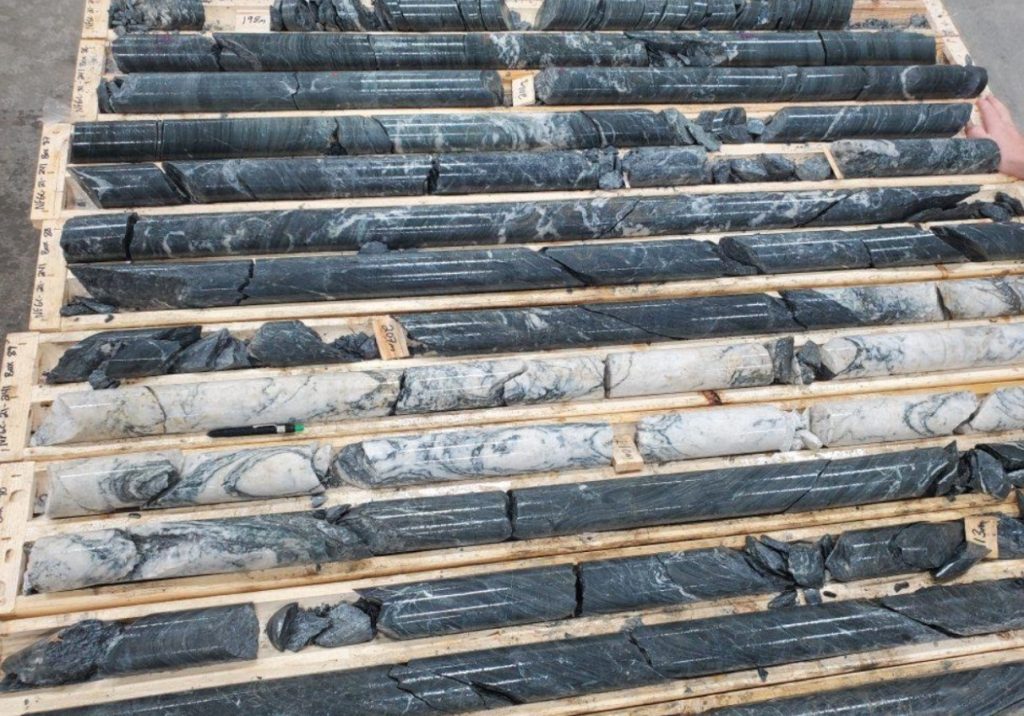New Found Gold drills 19.6 g/t gold over 5.25 metres at Queensway, Newfoundland

New Found Gold Corp. [NFG-TSXV; NFGC-NYSE American] reported results from 13 diamond drill holes that were completed as part of a follow-up drill program at the new Iceberg discovery, a high-grade zone located 300 metres northeast of Keats Main along the highly prospective Appleton fault zone (AFZ). New Found’s 100%-owned Queensway project comprises a 1,662 km2 area, accessible via the Trans-Canada Highway, 15 km west of Gander, Newfoundland.
Iceberg and Iceberg East highlights: A 375-metre step-out east-northeast of the recently discovered Iceberg zone intercepted 21.7 g/t gold over 4.45 metres in NFGC-23-1285 just 54 metres from surface. This eastern extension located along the Keats-Baseline fault zone (KBFZ) is named Iceberg East and is interpreted to connect to Iceberg. NFGC-23-1285 is located 500 metres east of the Appleton fault zone, making it the easternmost, highest-grading hole ever drilled along the AFZ, significantly expanding the known extent of mineralization that can be found along the AFZ damage zone.
A 110-metre step-out west-southwest of the Iceberg zone intercepted 19.6 g/t gold over 5.25 metres in NFGC-23-1217 at a vertical depth of 137 metes, making it the deepest high-grade intercept into the Iceberg zone to date. Together with hole NFGC-23-1285, the Iceberg-Iceberg East zone is now drill-defined over a 550-metre strike length, representing a ten-fold increase compared to the previously known extent of mineralization.
A 50-metre step-down dip of the previously reported interval of 15.3 g/t gold over 10.75 metres in NFGC-22-1084 (March 1, 2023) at Iceberg intercepted 12.4 g/t gold over 6.60 metres in NFGC-23-1222, demonstrating strong continuity of high-grade.
The Iceberg zone is defined by several high-grade intervals such as 49.7 g/t gold over 29.85 metres in NFGC-23-1120, 72.2 g/t gold over 9.65 metres in NFGC-23-1100 and 35.6 g/t gold over 10.65 metres in NFGC-23-1141 that are hosted by the KBFZ, the same structure that hosts the Keats Main zone. Between Iceberg and Keats, the KBFZ now has a defined mineralized strike length of 1.8 km.
Iceberg and Iceberg East remain open in all directions and drilling is ongoing to expand along strike and to depth with several intervals currently pending assay results.
Greg Matheson, chief operating officer, stated: “In the early days of the Queensway discovery at Keats Main, we took a very methodical approach to exploration, utilizing small step-outs to track mineralization and fully understand the structure along the Keats-Baseline fault zone. At Iceberg, the perceived fault-displaced eastern extension of Keats Main located along the KBFZ, we have taken a decidedly different approach, implementing more aggressive step-outs with the goal of more quickly grasping the scale of structure and mineralization. We now know Iceberg has a defined strike length of 550 metres. This is within the overall Keats-Iceberg KBFZ corridor that has a defined strike length of over 1.8 km, where it remains open.”
The company is currently undertaking a 500,000-metre drill program at Queensway, and approximately 60,800 metres of core are currently pending assay results.
The company notes that it has not completed any economic evaluations of its Queensway project and that the Queensway project does not have any resources or reserves.
The Queensway project is intersected by the Trans-Canada Highway and has logging roads crosscutting the project, high-voltage electric power lines running through the project area, and easy access to a highly skilled work force. The company is well financed for this program, with cash and marketable securities of approximately $60 million as of May 2023.
